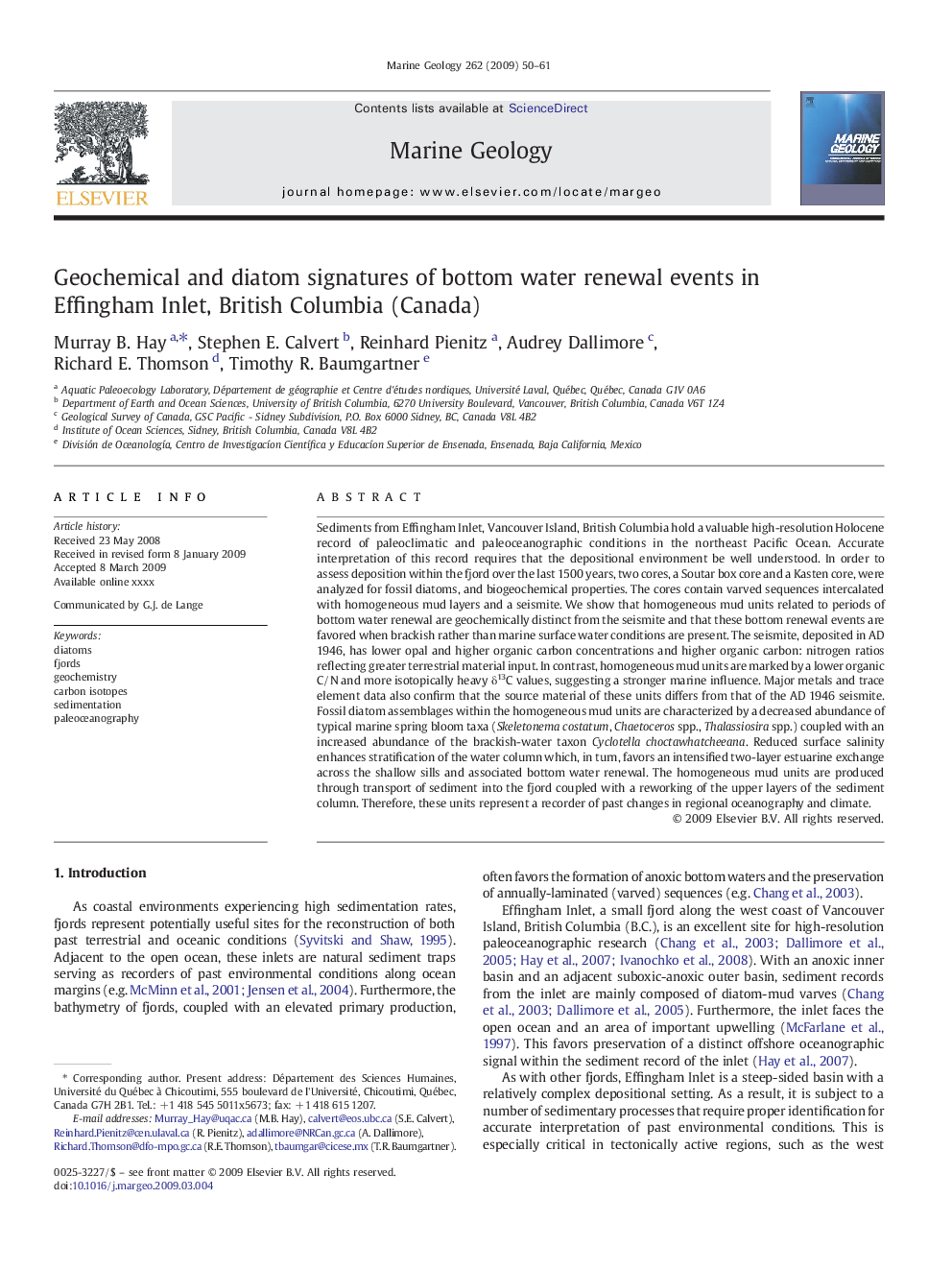| کد مقاله | کد نشریه | سال انتشار | مقاله انگلیسی | نسخه تمام متن |
|---|---|---|---|---|
| 4719005 | 1639164 | 2009 | 12 صفحه PDF | دانلود رایگان |

Sediments from Effingham Inlet, Vancouver Island, British Columbia hold a valuable high-resolution Holocene record of paleoclimatic and paleoceanographic conditions in the northeast Pacific Ocean. Accurate interpretation of this record requires that the depositional environment be well understood. In order to assess deposition within the fjord over the last 1500 years, two cores, a Soutar box core and a Kasten core, were analyzed for fossil diatoms, and biogeochemical properties. The cores contain varved sequences intercalated with homogeneous mud layers and a seismite. We show that homogeneous mud units related to periods of bottom water renewal are geochemically distinct from the seismite and that these bottom renewal events are favored when brackish rather than marine surface water conditions are present. The seismite, deposited in AD 1946, has lower opal and higher organic carbon concentrations and higher organic carbon: nitrogen ratios reflecting greater terrestrial material input. In contrast, homogeneous mud units are marked by a lower organic C/N and more isotopically heavy δ13C values, suggesting a stronger marine influence. Major metals and trace element data also confirm that the source material of these units differs from that of the AD 1946 seismite. Fossil diatom assemblages within the homogeneous mud units are characterized by a decreased abundance of typical marine spring bloom taxa (Skeletonema costatum, Chaetoceros spp., Thalassiosira spp.) coupled with an increased abundance of the brackish-water taxon Cyclotella choctawhatcheeana. Reduced surface salinity enhances stratification of the water column which, in turn, favors an intensified two-layer estuarine exchange across the shallow sills and associated bottom water renewal. The homogeneous mud units are produced through transport of sediment into the fjord coupled with a reworking of the upper layers of the sediment column. Therefore, these units represent a recorder of past changes in regional oceanography and climate.
Journal: Marine Geology - Volume 262, Issues 1–4, 1 July 2009, Pages 50–61